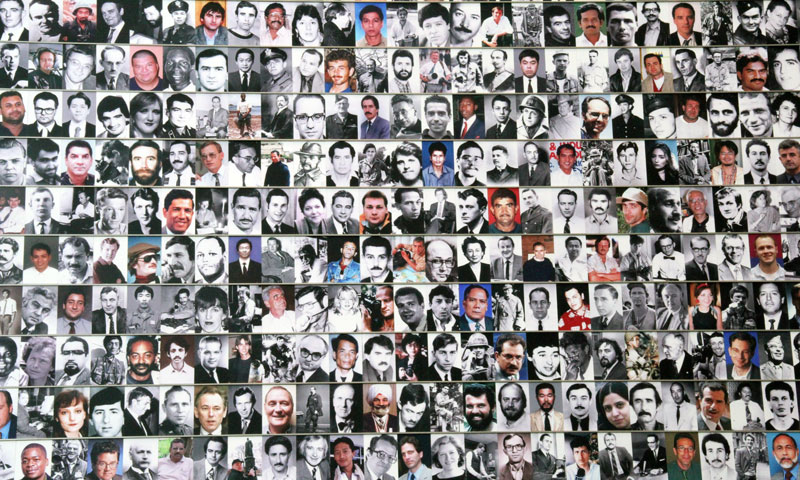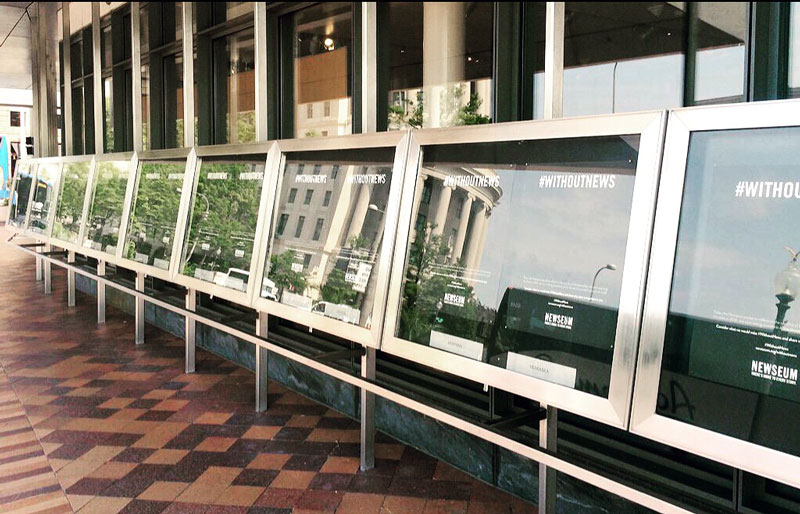WASHINGTON – Ever since Edward Snowden revealed National Security Agency programs that were collecting telephone metadata from millions of Americans, one of the entities whose name has appeared frequently in the news is the Foreign Intelligence Surveillance Court—also known as the FISA court, or FISC.
The little-known body often criticized as a rubberstamp for the intelligence wing of the government whenever the latter needs a warrant, FISC could undergo several changes in the coming months if Congress and the president feel enough pressure from the public.
But some insiders say change might not be necessary. U.S. District Judge John D. Bates, a former FISC judge and the current director of the Administrative Office of U.S. Courts, said Thursday that the need to reform FISC is mostly overblown. Speaking at a Newseum event, Bates said the public debate about the FISC provides a chance to improve public understanding of what exactly the court does.
How was FISC created?
“The Foreign Intelligence Surveillance Act [of 1978] was a result of a couple of things coalescing. One was in the legal world: the Supreme Court and lower court decisions on whether there should be a foreign intelligence exception to the warrant requirement of the Fourth Amendment. And the other thing that was coming about, culminating in the midst of the 1970s, was the Church Committee review of intelligence abuses. And those two things led to FISA being enacted.”
[The U.S. Senate Select Committee to Study Governmental Operations with Respect to Intelligence Activities, better known as the Church Committee for its chairman Frank Church (D-Idaho), was created in 1975 to investigate intelligence gathering activities by the FBI, CIA and NSA in the wake of the Watergate scandal.]
“The courts [were] created to give a judicial role for these foreign intelligence surveillance operations that the government was involved in. If you were going to give a judicial role, it had to be something a little different and spread out across all the federal courts of the country.”
Who sits on FISC?
“There are 11 judges on the court at any time, they serve for seven-year terms and they’re appointed by the chief justice. The court functions every day. One judge will sit for a week at a time, four or five weeks per year, spread out throughout the year.
“They need to be experienced judges with lots of judicial background, but they’re not necessarily going to have specific national security experience in these kinds of matters. They need experience, they need to be regarded as excellent judges by the community, and they need to have a workload that can accommodate the extra assignments, because it is an extra assignment—it doesn’t reduce the judges’ duties back in their home districts.”
How does the warrant application process work?
“A very close parallel is the Title III warrant application process—that’s the criminal law enforcement parallel to these foreign intelligence applications for surveillance. In that setting, the matter comes from a U.S. attorney’s office to a judge. There’s no additional advocate—the target [of the warrant] can’t be there because you’re not informing the target that they’re going to be the subject of surveillance. The judge reviews the materials and makes a decision whether to approve the application or not. So it’s a very similar [process].”
[Federal agencies must submit an application to FISC to obtain a warrant before they may engage in electronic surveillance of a specific target. The court meets behind closed doors to approve or reject the warrant application, with an agency advocate present and without representation for the target.]
What about the criticism that FISC is a rubberstamp for the intelligence community?
“There have been some concerns expressed, and I understand the concerns, that FISC routinely approves applications. In fact, the overwhelming majority of applications are approved. The idea that FISC is a rubberstamp and just does whatever the government asks it to do, I think that really has been taken care of by some of the revelations of the past few months.
“Statistically, the court did three months’ worth of study to see what happens to applications that were filed with FISC. It turned out that almost 25 percent of those apps were changed in some material way. That includes factual development, where the court was not satisfied with the facts as originally presented and asked for further development of the facts; dropping particular theories the government might have for why surveillance was permitted under the law; the government actually withdrawing applications because the court indicated a significant concern to the point where it might not be approved; and then those cases which were actually declined, which is a small category.”
“I think that’s a confirmation of the fact that you can’t just look at what happens with the final document. These applications come in, first, in what we call “read copy,” and only after they’re worked on and changed significantly does it end up being the final application, and that’s what those findings showing almost complete approval are based on. It’s what happens before that final application that really reflects the changes that are made.”
So the high rate of approval of warrant applications doesn’t concern you?
“It doesn’t trouble me that a low number were denied. It’s similar to the number of Title III [criminal law warrant applications that were denied], a single digit number any given year. I think you should expect that of our system.”
“These applications start in the field and are reviewed there—there’s pretty close scrutiny required at that stage. It then goes to [agency] headquarters, where there’s equal or greater scrutiny applied. After that, the application comes to the national security division of the Department of Justice where it gets further scrubbing. Many provisions of FISA actually require high levels of involvement from the director of [the agency] or the attorney general. So you gain really close examination of these matters even before it gets to the [FISA] court. With that process taking place, I’d be disappointed if a larger number of final applications were actually denied. There shouldn’t be.”
Why is FISC just making news now?
“Historically, until the last year or two, the court didn’t really have a series of issues that created a need for judicial conference involvement—judicial conference being the governing body of the federal court system. That changed last summer when the post-[Edward] Snowden world led to a lot of legislative activity, media inquiries, and other communications with the FISA court.”
What do you think of some of the proposed reforms, like a more transparent and less centralized appointment process?
“I understand the concerns about the appointment process, but I don’t think that change is really warranted. There are problems with any change that I’ve seen suggested. First of all, you can’t afford to have vacancies on the FISA court because of the way the court operates, the fact that it’s an extra duty for the judges. Spreading the [appointment] responsibility out among the circuit judges or even associate justices of the Supreme Court might lead to more delays.”
“There’s also a problem with refocusing [appointment power] somewhere else other than the chief justice. [Potential FISC] judges are subjected to a very intense security routine, more intense than they previously have faced. Sometimes, a judge just doesn’t make it. It would be really unfortunate if the names of judges who were being considered got out, and then that judge was not approved through the security clearance process for the court. Other means of selecting judges might increase the chance of that.”
“There’s also a fairly strong logic to having the chief justice make the appointments. He is the presiding officer of the judicial conference, and this is what he does for all the committees of the judicial conference, with the assistance of the Director of the Administrative Office and the presiding judge of FISC, and all the resources they draw upon. It would be difficult for anyone else to really do that as efficiently.”
What about having a public advocate present during FISC proceedings?
“The public advocate idea has some merit in specific circumstances, but not generally. Most of the cases before the court are very fact-based. A public advocate wouldn’t add much to that process because they can’t really get into the facts. They can’t communicate with the target. They don’t have a means to develop any further facts. And it would detract from the efficiency of the process substantially. You’d have further delays, if that institutional advocate had to look at all the applications that were filed.”
“I think most people who thought about this carefully agree that an advocate would only be worthwhile in a smaller slice of the cases. Those cases might include some of the bulk collection [cases], and they certainly would include cases that have novel legal or technological issues. In those cases, there might be some benefit to an additional perspective than what is being received from the government through the Department of Justice.”










